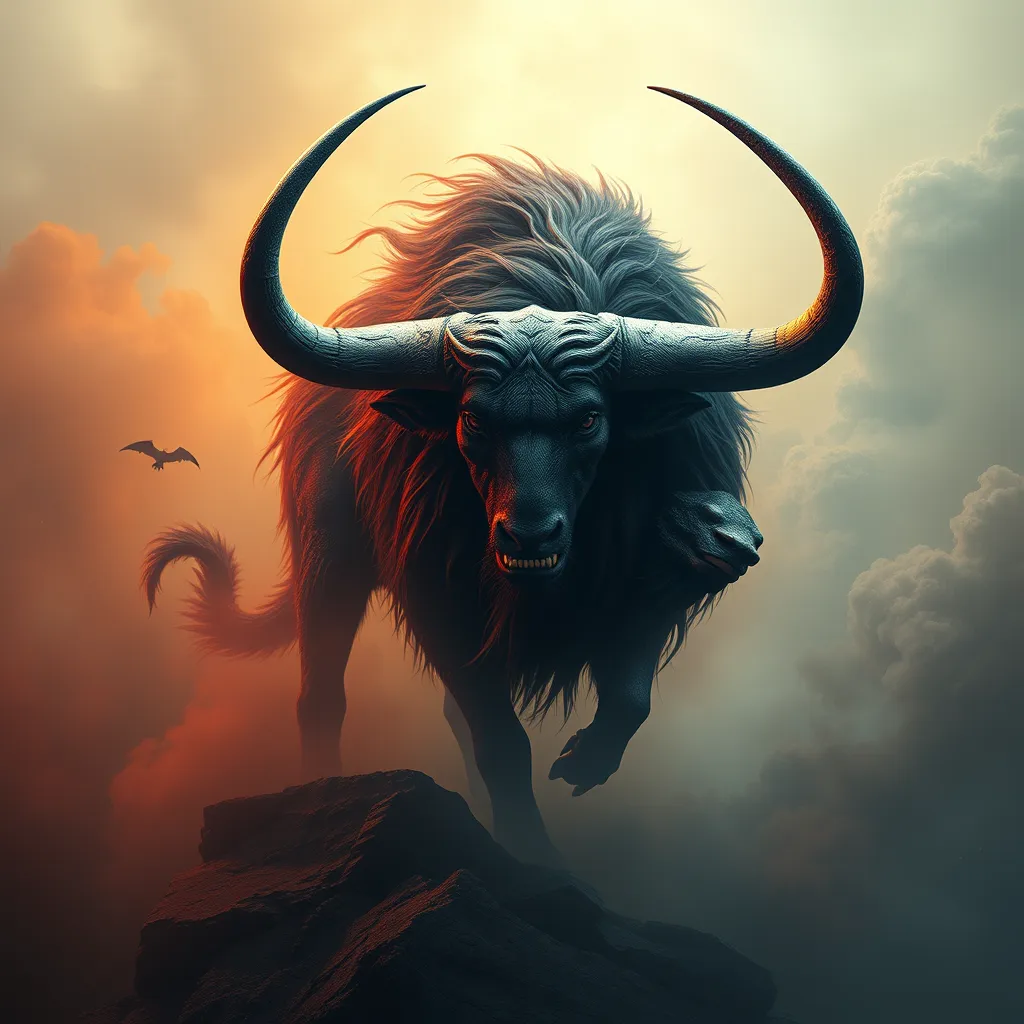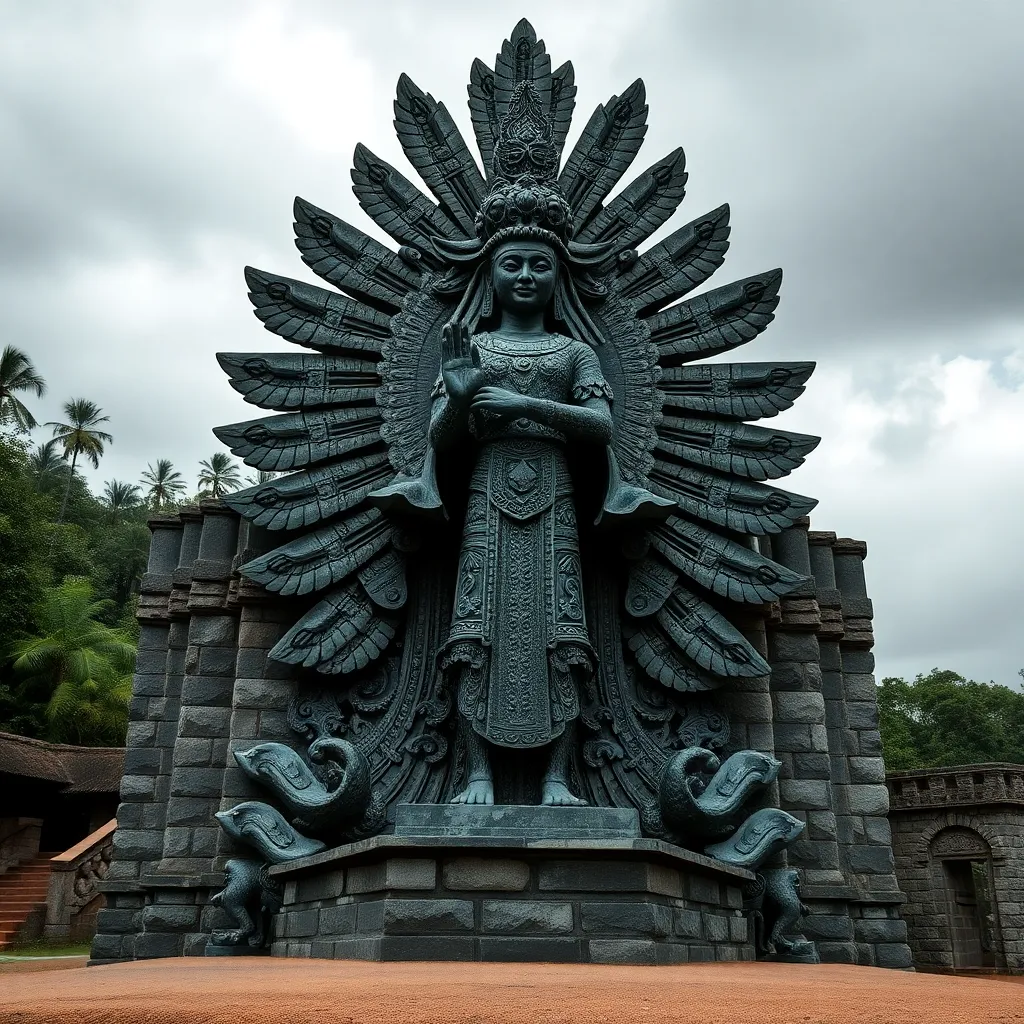The Spirits of the Night: Exploring the Lore of the Slavic Zmey
I. Introduction to Slavic Mythology
Slavic mythology is a rich tapestry woven from the beliefs, traditions, and folklore of the Slavic peoples. This intricate system of stories and characters has been passed down through generations, offering insights into the values and worldviews of those who inhabit the Slavic lands. Among the myriad of mythological beings, one stands out for its power and complexity: the Zmey.
The Zmey, often depicted as a dragon-like creature, plays a significant role in Slavic culture. Its dual nature as both a menacing force and a wise protector embodies the complexity of the human experience, reflecting themes of chaos, wisdom, and the struggle between good and evil.
II. Etymology and Variations of the Zmey
A. Meaning of “Zmey” and its linguistic roots
The term “Zmey” originates from the Proto-Slavic word *zmejь, which translates to “serpent” or “dragon.” This linguistic root underscores the Zmey’s association with serpentine qualities, often linked to themes of transformation and danger.
B. Different regional variations of the Zmey across Slavic nations
- Russia: Known as Zmey Gorynych, a three-headed dragon that breathes fire and is often depicted as a formidable foe to heroes.
- Ukraine: The Zmey is associated with tales of bravery and adventure, often featuring prominently in folk epics.
- Poland: The Zmey appears in various forms, including the Wawel Dragon, a legendary creature slain by a hero in Krakow.
- Serbia: The Zmey is often personified as a guardian spirit, protecting treasures and sacred places.
III. Physical Characteristics and Symbolism
A. Common descriptions of the Zmey in folklore
Descriptions of the Zmey vary considerably across different tales and regions. Common characteristics include:
- Multiple heads, often three, each representing different aspects of its nature.
- Scales that shimmer in various colors, symbolizing its connection to the elements.
- Wings that allow it to soar through the skies, emphasizing its power and dominion.
- A long, serpentine body that embodies both grace and danger.
B. Symbolic meanings associated with the Zmey
The Zmey is rich in symbolism, representing:
- Chaos: Often seen as a bringer of destruction, the Zmey embodies the chaos of the natural world.
- Wisdom: In some tales, the Zmey is a source of ancient knowledge and understanding.
- Protection: In contrast to its destructive nature, the Zmey can also serve as a guardian of sacred knowledge and treasures.
IV. The Role of the Zmey in Slavic Folktales
A. Prominent folktales involving the Zmey
The Zmey appears in numerous folktales, often featuring in epic narratives that highlight the conflict between heroes and monstrous adversaries. Some notable tales include:
- Zmey Gorynych: A tale of a hero who battles a fearsome three-headed dragon to save a princess and restore peace.
- The Wawel Dragon: The story of a dragon that terrorizes the city of Krakow until it is outwitted by a clever hero.
B. The Zmey as both antagonist and protector in stories
In Slavic folklore, the Zmey often serves dual roles. As an antagonist, it presents challenges that heroes must overcome, representing the chaos and dangers of the world. Conversely, in some narratives, the Zmey acts as a protector, guarding sacred lands or ancient wisdom, thus embodying a more benevolent aspect.
V. The Zmey in Slavic Cultural Practices
A. Rituals and traditions associated with the Zmey
Throughout the Slavic regions, various rituals and customs have evolved around the Zmey. These may include:
- Festivals celebrating the triumph of good over evil, often symbolized by the defeat of the Zmey.
- Rites seeking the Zmey’s protection for crops and livestock, reflecting the creature’s association with nature.
B. Influence of the Zmey on local customs and celebrations
The Zmey’s presence in folklore has influenced local customs, including:
- Storytelling traditions that keep the Zmey’s tales alive, often performed during community gatherings.
- Symbolic decorations featuring dragon motifs during cultural festivals to invoke protection and prosperity.
VI. The Zmey in Modern Media and Popular Culture
A. Representation of the Zmey in literature, film, and art
In contemporary culture, the Zmey has found its way into various forms of media. From fantasy novels to animated films, the Zmey continues to captivate audiences. Notable representations include:
- Literature that reimagines Slavic myths, integrating the Zmey into modern narratives.
- Films that portray the Zmey as both a villain and a misunderstood creature.
- Visual arts that celebrate the Zmey’s majestic and fearsome qualities.
B. The resurgence of interest in Slavic mythological creatures
With the rise of global interest in folklore and mythology, the Zmey has experienced a resurgence, inspiring contemporary artists and storytellers to explore its rich heritage and cultural significance.
VII. Comparative Mythology: The Zmey and Other Dragons
A. Similarities and differences between the Zmey and dragons in other cultures
When compared to dragons in other mythologies, the Zmey shares certain traits while also exhibiting unique characteristics. Similarities include:
- Serpentine forms and associations with chaos and destruction.
- The role of dragons as guardians of treasure or knowledge.
However, the Zmey is distinct in its dual role as both an antagonist and a protector, reflecting the complexities of Slavic belief systems.
B. The Zmey’s place in the broader context of global dragon mythology
Globally, dragons occupy a significant place in mythology, often representing elemental forces. The Zmey’s multifaceted nature contributes to the broader understanding of how different cultures interpret the dragon archetype, emphasizing themes of struggle, power, and redemption.
VIII. Conclusion: The Enduring Legacy of the Zmey
A. Reflection on the significance of the Zmey in contemporary culture
The Zmey remains a potent symbol of resilience and cultural identity within the Slavic world. Its stories continue to resonate, reminding us of the timeless human experiences of conflict, bravery, and wisdom.
B. The Zmey as a symbol of resilience and cultural identity in the Slavic world
As Slavic cultures evolve, the Zmey endures as a powerful emblem of heritage, inspiring new generations to connect with their roots. Through its stories, the Zmey not only reflects the past but also serves as a beacon of hope and strength for the future.



